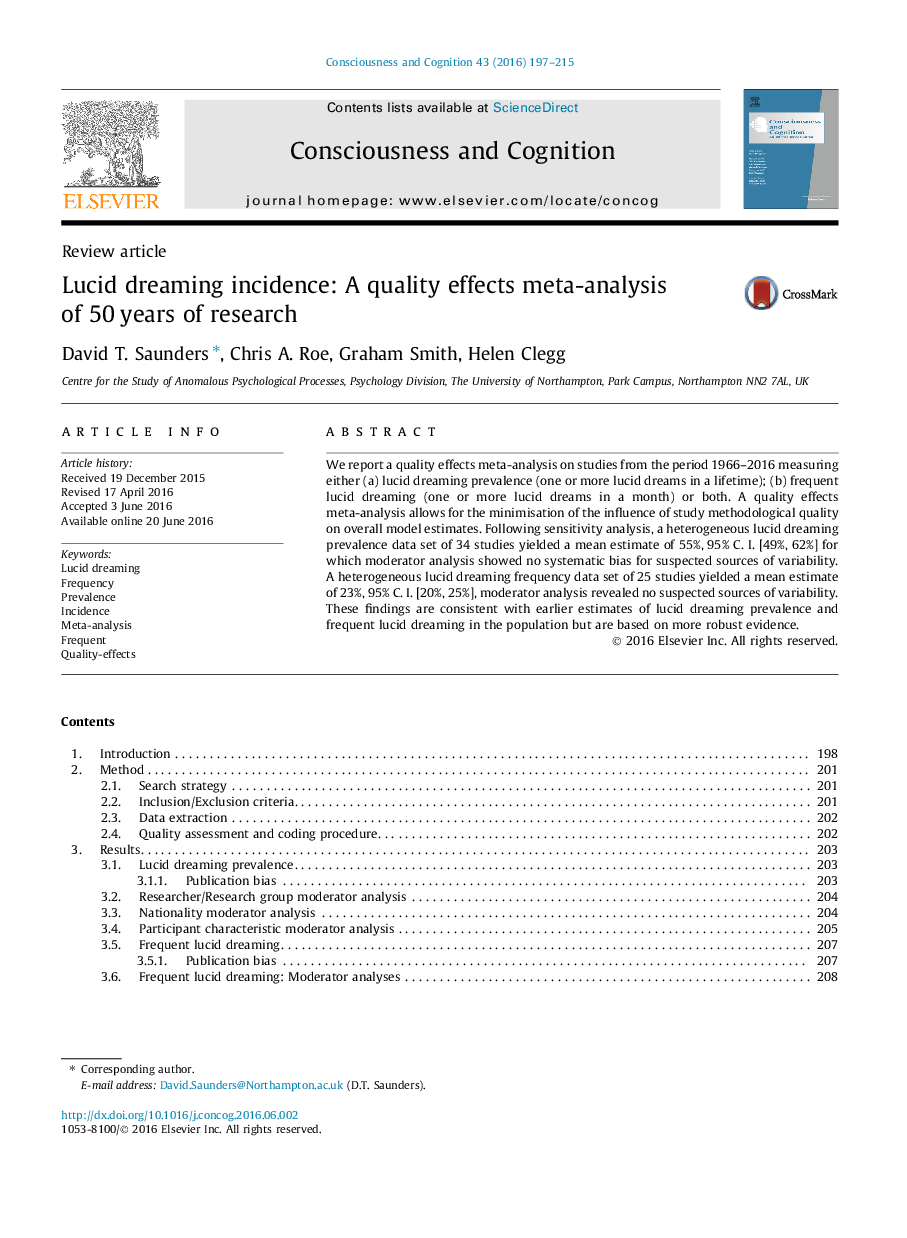| Article ID | Journal | Published Year | Pages | File Type |
|---|---|---|---|---|
| 7288385 | Consciousness and Cognition | 2016 | 19 Pages |
Abstract
We report a quality effects meta-analysis on studies from the period 1966-2016 measuring either (a) lucid dreaming prevalence (one or more lucid dreams in a lifetime); (b) frequent lucid dreaming (one or more lucid dreams in a month) or both. A quality effects meta-analysis allows for the minimisation of the influence of study methodological quality on overall model estimates. Following sensitivity analysis, a heterogeneous lucid dreaming prevalence data set of 34 studies yielded a mean estimate of 55%, 95% C. I. [49%, 62%] for which moderator analysis showed no systematic bias for suspected sources of variability. A heterogeneous lucid dreaming frequency data set of 25 studies yielded a mean estimate of 23%, 95% C. I. [20%, 25%], moderator analysis revealed no suspected sources of variability. These findings are consistent with earlier estimates of lucid dreaming prevalence and frequent lucid dreaming in the population but are based on more robust evidence.
Related Topics
Life Sciences
Neuroscience
Cognitive Neuroscience
Authors
David T. Saunders, Chris A. Roe, Graham Smith, Helen Clegg,
